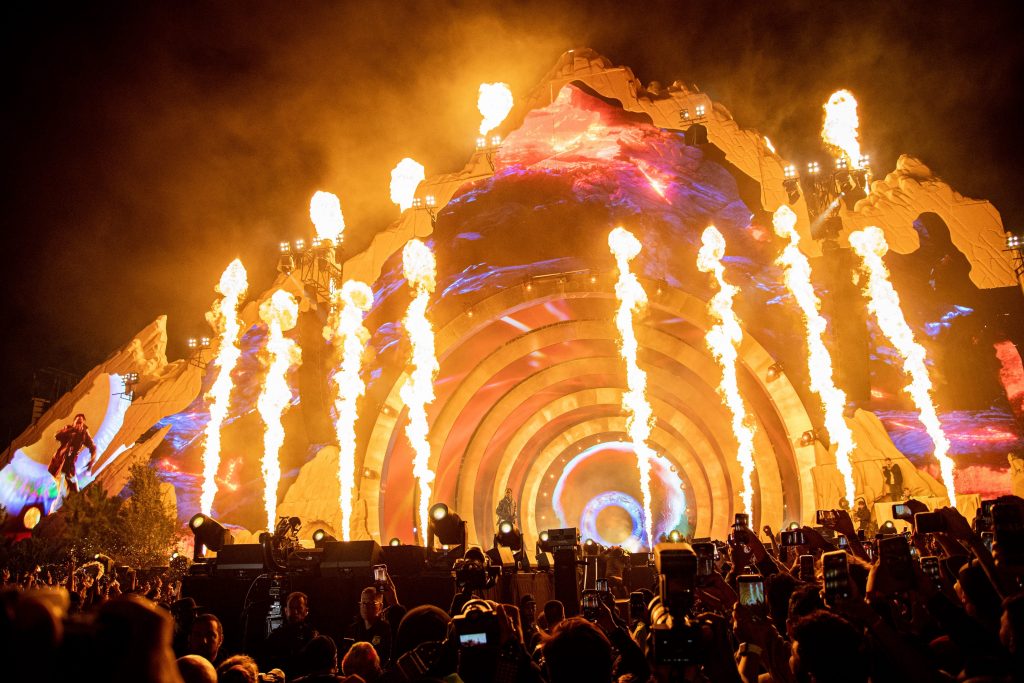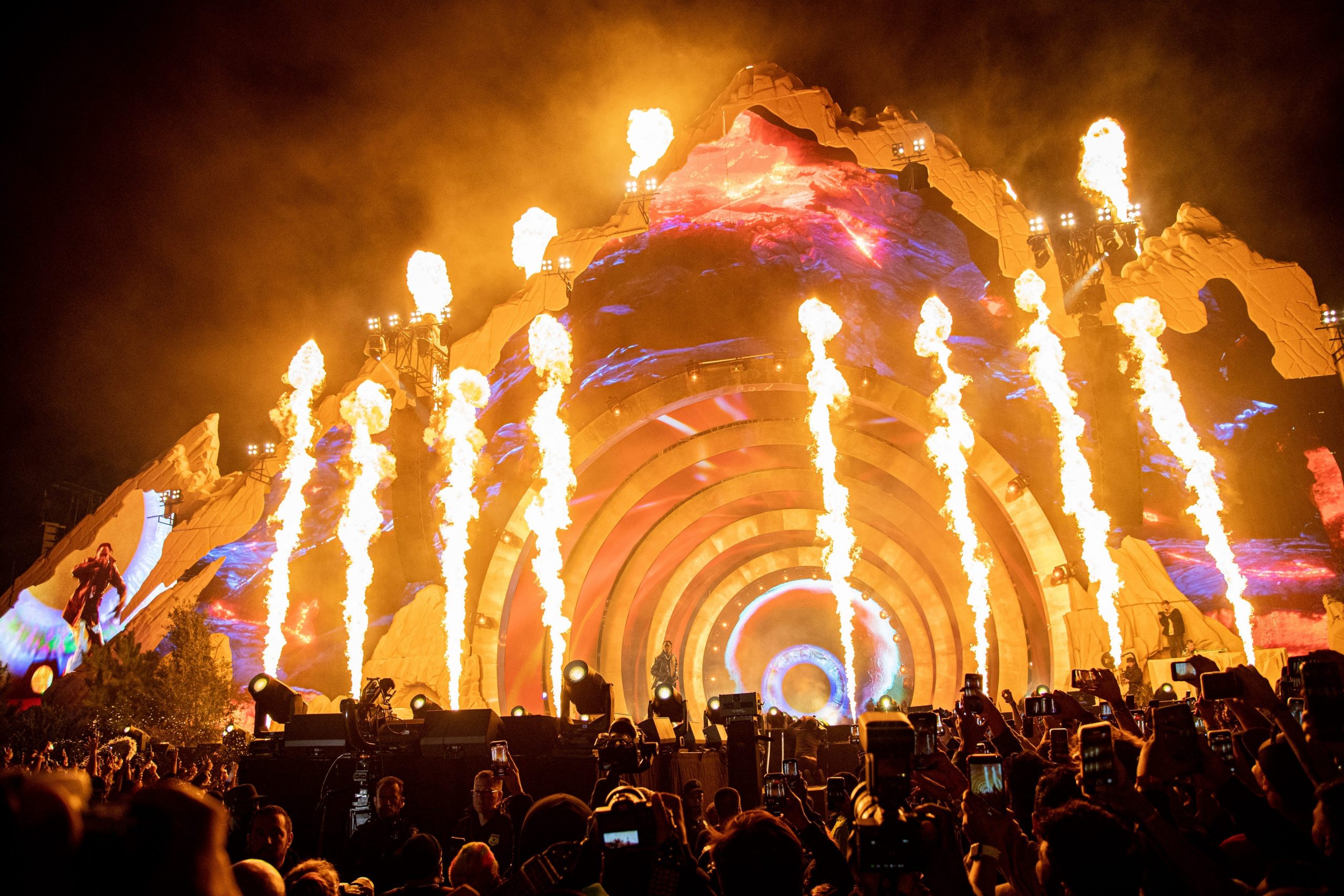
Amy Harris/Invision/AP
- Astroworld was so densely packed that concertgoers couldn't move or execute independent choices.
- The crowd behaved like a fluid, with waves of pressure and release.
- Attributing crowd surges solely to "mass panic" places false blame on victims.
There's a scientific explanation for last week's deadly crowd surge at the Astroworld music festival in Houston.
When people are loosely packed in a crowd, with fewer than four people per square meter, they have room to make and act on their own decisions. But when crowd density rises above four people per square meter, and especially to six or more, something strange happens: People get pressed together so tightly that they begin to move together as one unit, with waves of pressure and release.
In other words, human bodies behave like a fluid. That appears to be what happened at Astroworld on Friday.
"It was like a current, almost, in an ocean," Reese Bludau, a 20-year-old who was in the crowd, told Houston's CBS affiliate, KHOU.
"You definitely weren't moving your arms," Bludau said, adding, "I had four to six people touching me at all times. It felt like I had probably 15 to 20 pounds on my chest and back."
Shockwaves that travel through a densely packed crowd can be forceful enough to lift people off their feet, suck off shoes, tear off clothing, and carry people 10 feet or more, as retired research engineer John Fruin explained in a 1993 paper. The intense pressure and warmth from bodies pressed together, coupled with anxiety in a high-stress situation, can also make it difficult to breathe.
Some people faint. At that point, Fruin wrote, the only way to remove a distressed person from a crowd is to physically lift them and pass them overhead to the edge of the fray.
Bludau told KHOU he was swept backward roughly 70 yards in 20 minutes, almost like he was caught in a rip tide. He stepped on people's shoes that had been sucked off their feet, he said.
"Whenever there would be a strong push from the back - when everyone would go forward - I'd fall forward," Bludau said. "And then whenever that wave would come back, I would step back and I would be catching the person in front of me."
These "stop-and-go waves" are a warning sign of a dangerously dense crowd, Dirk Helbing, a computational social science researcher at the Swiss Federal Institute of Technology, told Smithsonian Magazine.
People wait for gaps in the crowd because there's no space to move organically. If someone falls, stumbles, or is pushed, it can create a "black hole effect," Helbing said, where more and more people get sucked into the empty space and fall themselves.
Deadly crowd surges were a problem long before Astroworld
An estimated 50,000 concertgoers attended the Astroworld festival last week.
When Travis Scott took the stage, people pushed toward the front, Houston's fire chief Samuel Peña said in a news conference after the concert. The crowd was so dense that some people were knocked down or lost consciousness when they weren't able to breathe. Fans were trampled. Nine people ultimately died, all younger than 30. Two were teenagers.
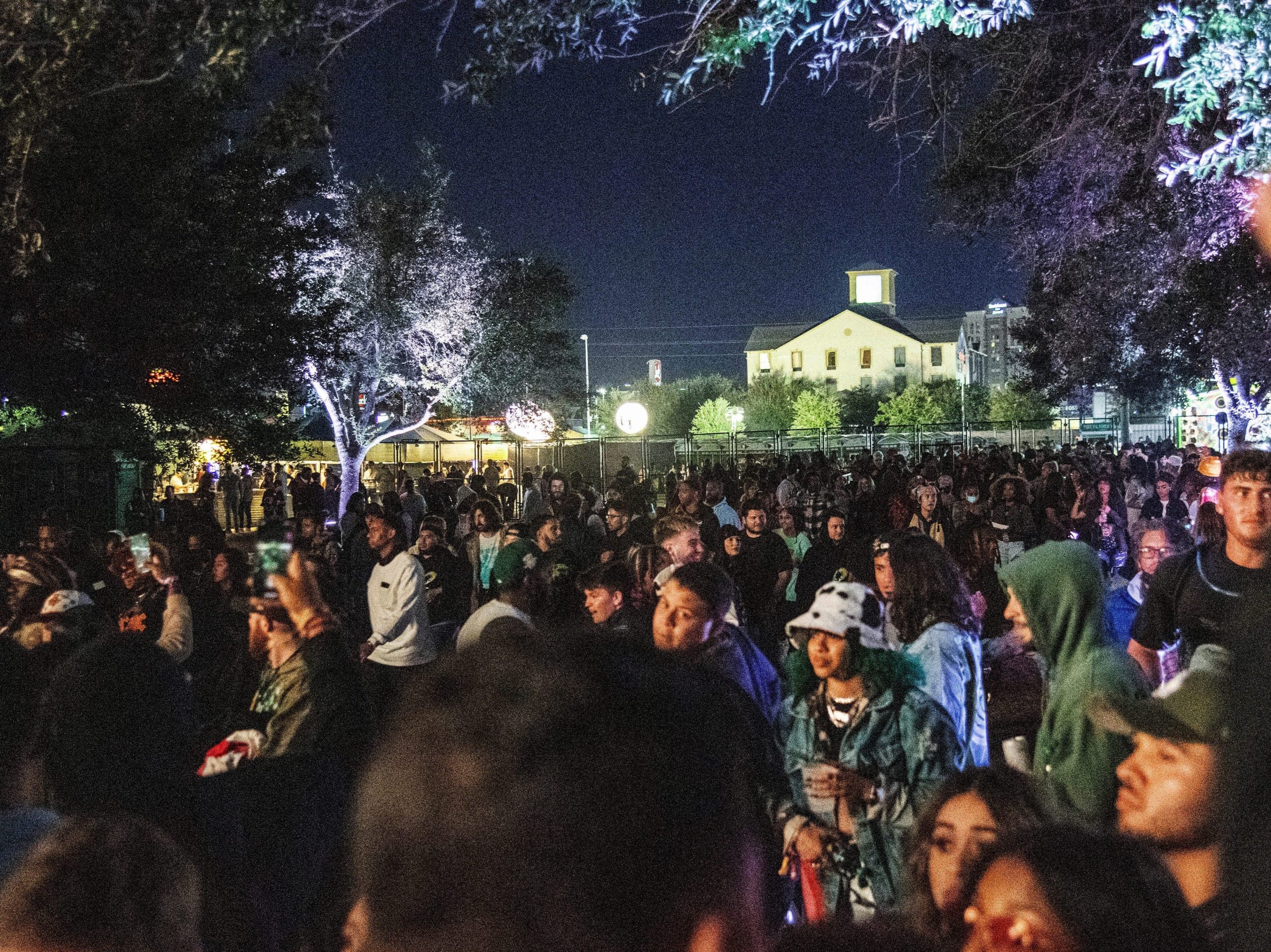
Amy Harris/Invision/AP
Concerts, sporting events, and religious festivals have led to deadly crowd surges since at least the 1970s, according to the Associated Press.
In 2010, an electronic dance festival in Duisburg, Germany, ended in 21 deaths and more than 500 injuries when thousands of attendees tried to funnel through narrow entry tunnels into the event.
Victims of the crowd surge and their families went on to press charges against the festival organizers and the city, the BBC reported, alleging that poor planning and bad crowd management had contributed to the deaths. The charges were later dropped due to lack of evidence and the parade was discontinued.
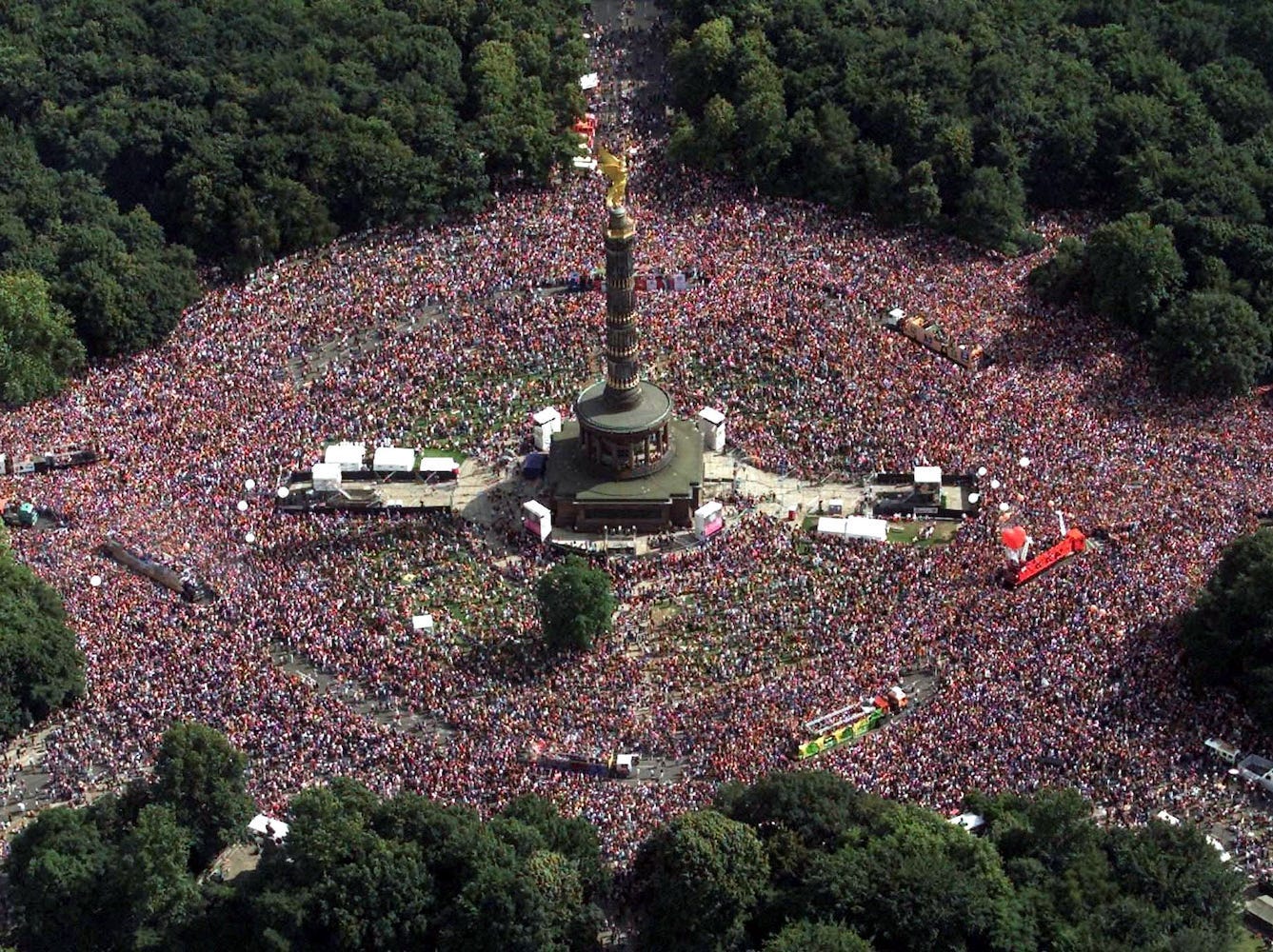
Reuters Pictures Archive/REUTERS
Though several news outlets, including Insider, previously referred to the Astroworld deaths as a "stampede" caused by mass panic, crowd scientists say that framework can mistakenly blame victims.
When large events aren't organized properly and crowd flow isn't taken into consideration, people are powerless to wrest themselves from a deadly, swaying mob. Addressing bottlenecks in spaces that hold large crowds can alleviate some of that risk, as could laws holding organizers responsible for event safety.
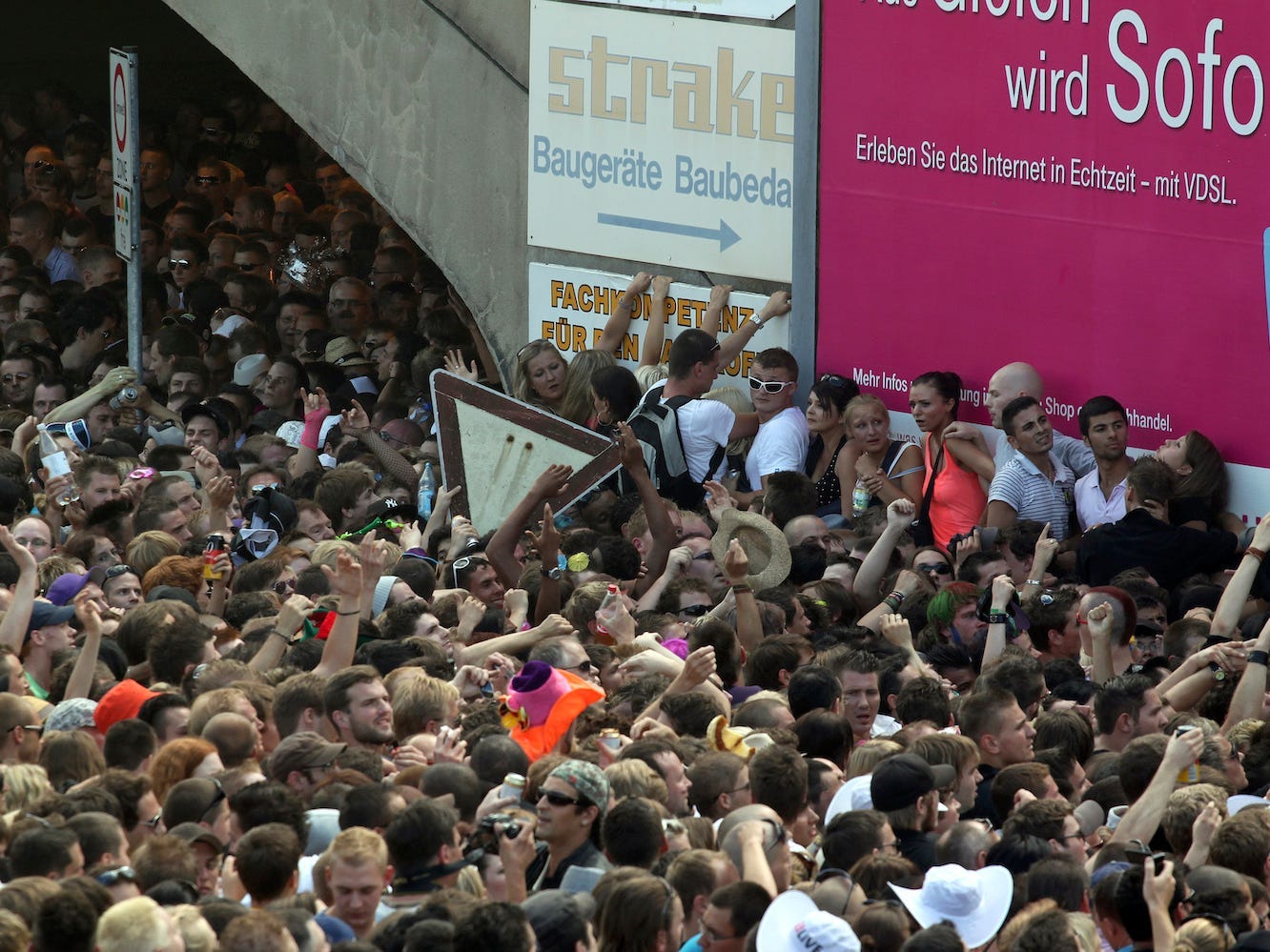
Daniel Naupold/REUTERS
"I've not seen any instances of the cause of mass fatalities being a stampede," Keith Still, a UK crowd science and risk analysis expert, told The Guardian. "People don't die because they panic. They panic because they are dying."
Aria Bendix contributed reporting.
